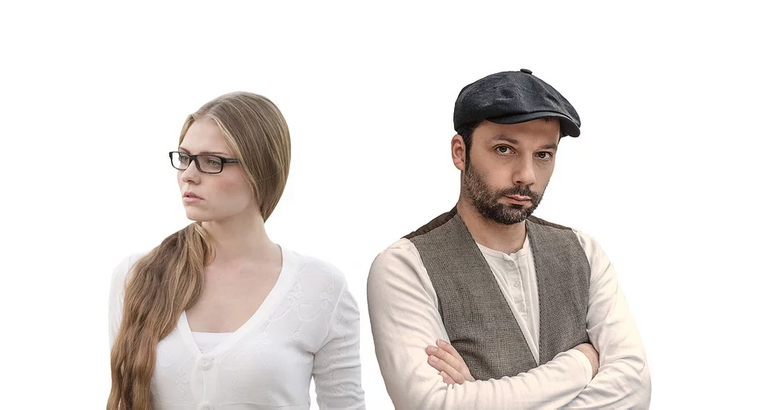Curating the Internet: Science and technology digest for December 17, 2019
Techniques for finding compromise in groups; A TED talk argues that more efficient isn't always best; Avoiding cognitive bias in science; Using DNA to estimate vertebrate lifespans; and completion of a STEM airdrop for active community members
Straight from my RSS feed | Whatever gets my attention |
Links and micro-summaries from my 1000+ daily headlines. I filter them so you don't have to.
- How to Turn Down the Boil on Group Conflict - Discussing the paper, Inaccurate Group Meta-Perceptions Drive Negative Out-Group Attributions in Competitive Contexts by Jeffrey Lees and Mina Cikara, this article suggests that an understanding of psychological stereotypes can help groups find avenues for compromise. The paper was published in Nature Human Behavior from November, 2019. The work observes that people don't just use stereotypes to describe what others are like, but also to predict what others will believe. In a series of experiments, the pair found that people consistently overestimate the resistance that will arise to an idea, which can lead to undue pessimism and missed opportunities. Here's the closing from the article:
“When you’re not talking about hot-button issues, you shouldn’t be afraid to broach the topic with people who have a different position than you,” Cikara says, “because it turns out you most likely have an inaccurate perception about what they think—and they have the same of you. All it takes is one person to break the cycle.”
- How to make inefficiency work for us - This TED talk was published in April, 2019, and it came across the ted.com RSS feed on December 10. In the talk, Edward Tenner, author of The Efficiency Paradox: What Big Data Can't Do argues that too much efficiency can be a bad thing. In the historical example of the potato, he talks about how the potato exploded in popularity until the "efficient" Irish potato was selectively bred to such a degree that crops failed, causing the Irish Potato Famine. Extending on that, he says that today's efforts at efficiency can exacerbate the problems that they're intended to solve. For example, after the deployment of electronic medical records, physicians complain that they have less time for seeing patients. Another issue that he describes is that competitive forces lead to matching gains in efficiency, which leads to an absence of overall progress (Reminiscent of IT Doesn't Matter). To address these problems with efficiency, and thereby drive productivity, Tenner suggests the concept of "inspired inefficiency". To accomplish this, he suggests the following: (i) Take the long road; (ii) Get up from the couch; (iii) Monetize mistakes; (iv) Sometimes try the hard way; (v) Get security through diversity; (vi) Achieve safety through redundancy in human skills; (vii) Be rationally extravagant. Of course, there are lengthy explanations with each of those suggestions, so you can click through to watch.
- How Scientists Can Avoid Cognitive Bias - Sabine Hossenfelder argues that scientists correct for bias in statistical analysis and measurement devices, but not for biases in their own brains. Describing cognitive bias as a shortcut that our brain uses to make faster decisions, she says that they are usually beneficial in everyday life, but that they can interfere with prioritization or cause scientists to overlook relevant or useful information. She lists three forms of bias that are relevant to science: attention bias - where a scientist pays attention to the wrong thing; loss aversion - where a scientist is influenced by the amount of effort that was already invested in a project; and social reinforcement - or group think. Hossenfelder argues that the current organization of the science publishing industry reinforces these biases, instead of resisting them. To reverse this, she says that researchers should be encouraged to switch topics - and to list the shortcomings of their own work, conferences should have speakers from competing programs, and scientists should be encouraged to offer criticisms on their own communities.
Here is the video:
Click through for the transcript.
Using this data, we found that we could estimate the lifespan of vertebrate species by looking at where DNA methylation occurs in 42 particular genes. This method also lets us estimate the lifespans of long-lived and extinct species.As noted in the headline, using this method, the estimated human lifespan is 38 years. The longest-lived animal that they estimated is the Bow Whale, at 268 years. The shortest-lived animail is the Milkfish, estimated at 12 years. The method also works on extinct species. For example, the team estimated the passenger pigeon lifespan at 28 years and the Wooly mammoth at 60 years. Two extinct species that are closely related to modern humans came in at 37.8 years. Mayne cautions, however, that because of technology and medical advances, modern humans may represent an exception for this method. Coauthors include: Oliver Berry, Campbell Davies, Jessica Farley & Simon Jarman. h/t RealClear Science
In order to help bring Steem's content to a new audience, if you think this post was informative, please consider sharing it through your other social media accounts.
And to help make Steem the go-to place for timely information on diverse topics, I invite you to discuss any of these links in the comments and/or your own response post.
Beneficiaries
- Burn STEEM/SBD - @null - 10%
- Cited author(s) - @stemgeeks - 10%
- Posting and/or scheduling service (steempeak.com) - @steempeak - 5%
- Steem/API services (anyx.io) - anyx - 5%
- Steem/RSS services (steemrss.com) - torrey.blog - 5%
- SteemWorld (steemworld.org) support - steemchiller - 5%
About this series
Sharing a link does not imply endorsement or agreement, and I receive no incentives for sharing from any of the content creators.
Follow on steem: @remlaps-lite, @remlaps
If you are not on Steem yet, you can follow through RSS: remlaps-lite, remlaps.
Thanks to SteemRSS from philipkoon, doriitamar, and torrey.blog for the Steem RSS feeds!
0
0
0.000
0 comments
